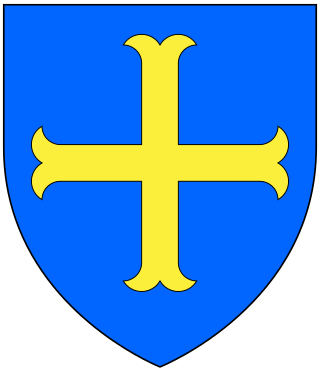Related Research Articles

Baron Dufferin and Claneboye, of Ballyleidy and Killyleagh in County Down, Northern Ireland, is a title in the Peerage of Ireland. It was created on 30 July 1800 for Dame Dorcas Blackwood, widow of Sir John Blackwood, 2nd Baronet, Member of the Irish Parliament for Killyleagh and Bangor, in return for support for the Union of Ireland and the United Kingdom.
There have been a number of creations of baronets with the surname Smith.

There have been six baronetcies created for persons with the surname Smyth, two in the Baronetage of England, one in the Baronetage of Great Britain, one in the Baronetage of Ireland and two in the Baronetage of the United Kingdom. One creation is extant as of 2010.
Nineteen baronetcies have been created for persons with the surname Hamilton, eight in the Baronetage of Nova Scotia, one in the Baronetage of England, five in the Baronetage of Ireland, one in the Baronetage of Great Britain and four in the Baronetage of the United Kingdom. As of 2008 two creations are extant, two are dormant, two are either extinct or dormant and twelve extinct.

There have been four baronetcies created for persons with the surname Montgomery, one in the Baronetage of Nova Scotia, one in the Baronetage of Great Britain and two in the Baronetage of the United Kingdom. One creation is extant as of 2011.
There have been five baronetcies created for persons with the surname Vavasour, three in the Baronetage of England and two in the Baronetage of the United Kingdom. As of 2008 four of the creations are extinct while one is extant.

There have been twenty one baronetcies created for persons with the surname Williams, eight in the Baronetage of England, three in the Baronetage of Great Britain and ten in the Baronetage of the United Kingdom. Only six of the creations are extant as of 2017.

There have been four baronetcies created for persons with the surname Hope, three in the Baronetage of Nova Scotia and one in the Baronetage of the United Kingdom. As of 2010 one creation is extant, one dormant and two extinct.

There have been four baronetcies created for persons with the surname Miller, two in the Baronetage of England, one in the Baronetage of Great Britain and one in the Baronetage of the United Kingdom. Two of the creations are extant as of 2008.
There have been four baronetcies created for persons with the surname Preston, two in the Baronetage of Nova Scotia, one in the Baronetage of England and another in the Baronetage of the United Kingdom.
There have been five baronetcies created for members of Clan Ramsay, four in the Baronetage of Nova Scotia and one in the Baronetage of the United Kingdom. The baronetcy in the Baronetage of the United Kingdom is extant as of 2023.

There have been three baronetcies created for descendants of the ancient Norman family of Molyneux who were granted extensive estates in Lancashire after the Norman Conquest.

There have been five baronetcies created for members of the old established family of Peyton of Peyton Hall in the parish of Boxford in Suffolk, all of whom were descended from Sir Robert Peyton (d.1518) of Isleham in Cambridgeshire, grandson and heir of Thomas Peyton (1418–1484) of Isleham, twice Sheriff of Cambridgeshire and Huntingdonshire, in 1443 and 1453. All the baronetcies are extinct.

There have been three baronetcies, all in the Baronetage of England, created for members of the Spencer family, both for descendants of two younger sons of Sir John Spencer (1524–1586) of Althorp, Northamptonshire:

There have been four baronetcies created for persons with the surname Cope.

Sir Adolphus Oughton, 1st Baronet, of Tachbrook, Warwickshire, was a British Army officer and politician.
There have been three baronetcies created for persons with the surname Humble, two in the Baronetage of England and one in the Baronetage of the United Kingdom. All are extinct.
Sir Charles Kemeys, 4th Baronet (1688–1735) was a British Tory politician who sat in the House of Commons between 1713 and 1734.
Sir Robert Pollock, 1st Baronet, of Pollok, was a British Army officer and Scottish politician who sat in the Parliament of Scotland from 1700 to 1707 and in the British House of Commons from 1707 to 1722.

The Howe baronetcy, of Compton in the County of Gloucester, was created in the Baronetage of England on 22 September 1660 for John Howe, Member of Parliament for Gloucestershire in 1654–1655 and 1656–1658. His elder son Richard, the second baronet, was also an MP, as was his younger son John Grobham Howe. Sir Richard Grobham Howe, the third baronet, was MP for Tamworth, Cirencester and Wiltshire. Sir Emanuel Scrope Howe, 4th Baronet became the 2nd Viscount Howe on the death of his father in 1713 and the baronetcy which he inherited in 1730 was merged with his viscountcy.
References
- ↑ John Burke, Bernard Burke, 'Weir, of Blackwood' in A Genealogical and Heraldic History of the Extinct and Dormant Baronetcies of England, Ireland and Scotland (1844), p.638.